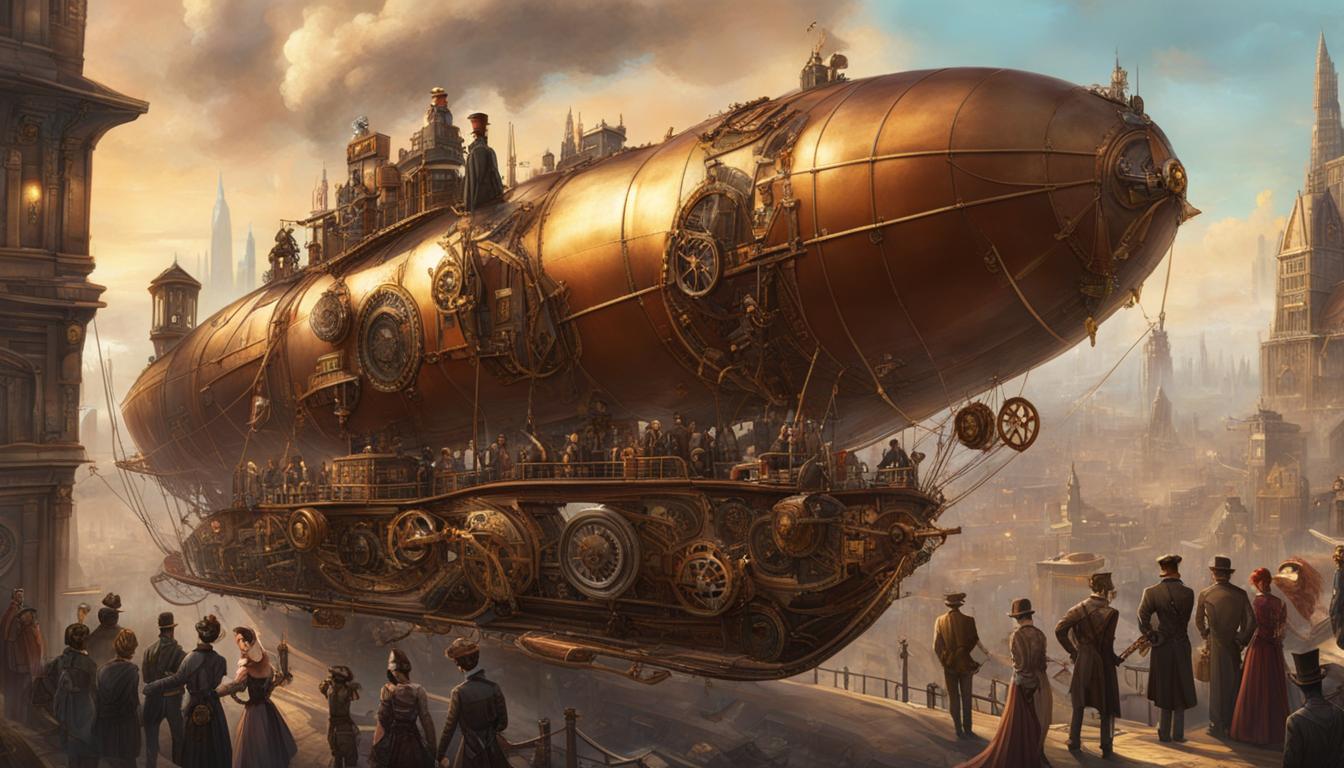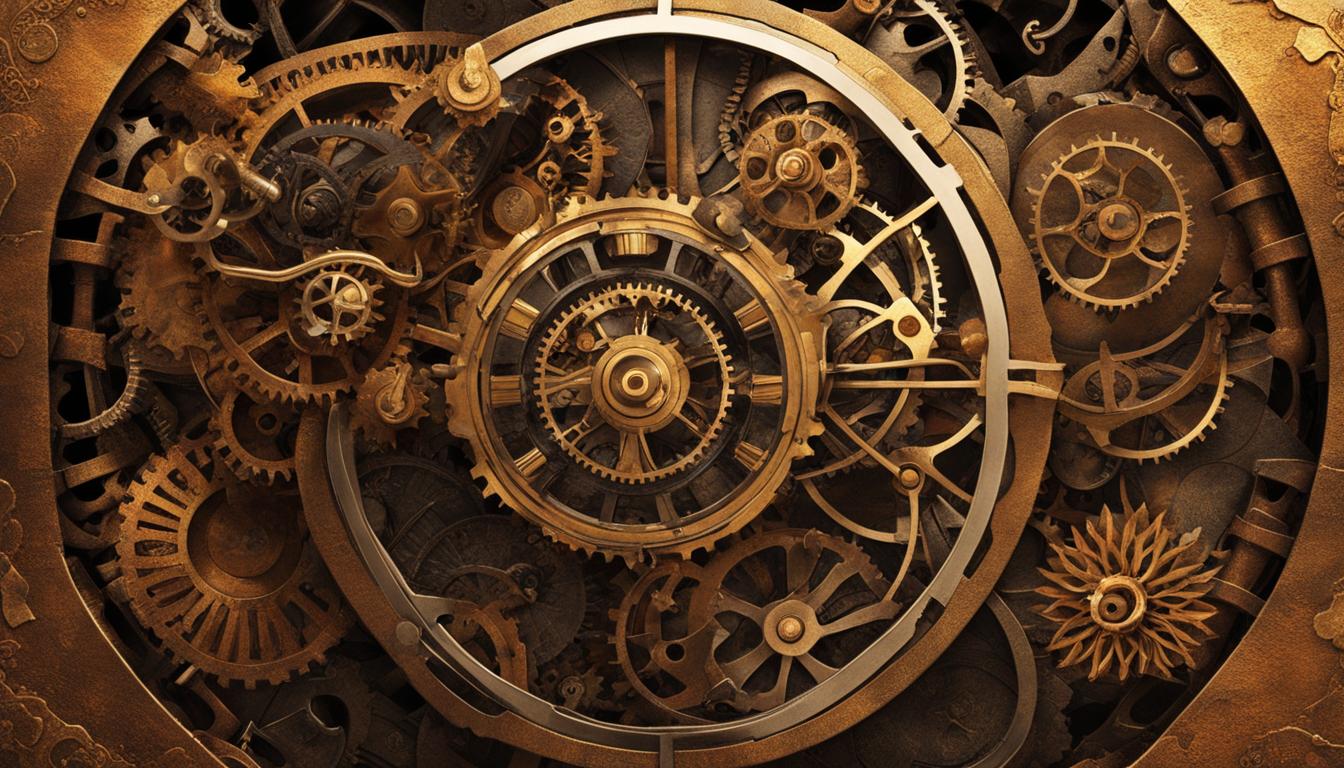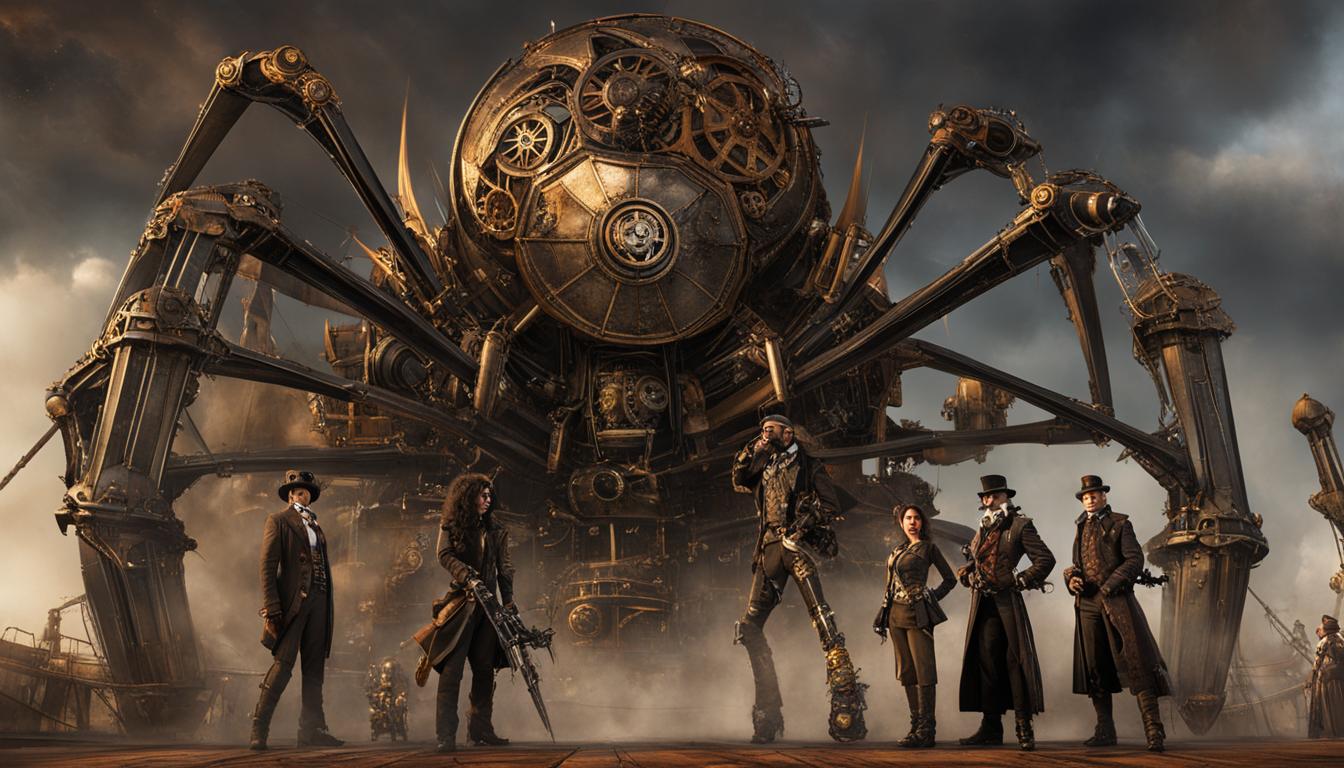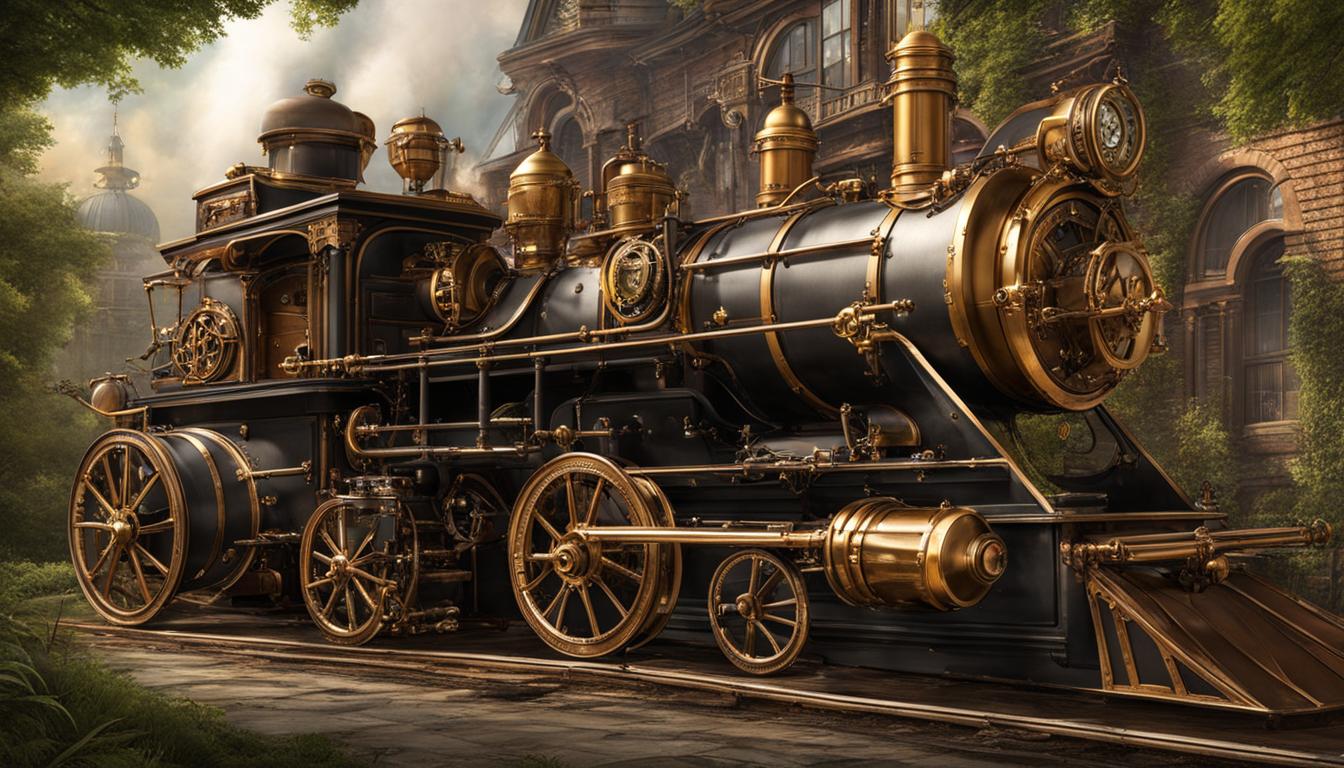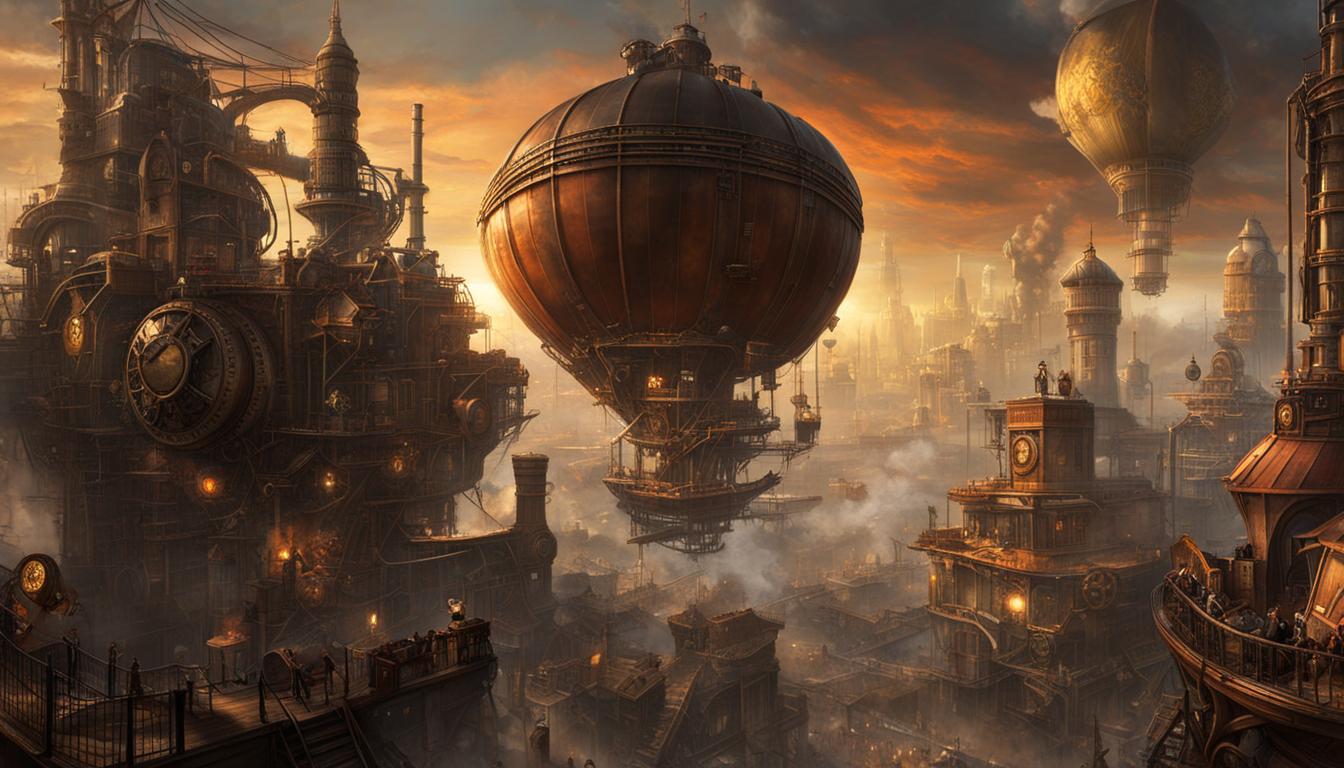Steampunk, a genre that combines elements of Victorian aesthetics and technology, has undergone a remarkable journey from obscurity to the limelight of mainstream popularity. This captivating subculture has seen its influence expand across various forms of media, captivating the imaginations of fans worldwide.
In the 1980s, author K.W. Jeter coined the term “steampunk” to describe a subculture that celebrated Victorian-inspired literature and steam-powered innovations. Since then, steampunk’s growth has been fueled by its ability to allow individuals to express their creativity, its allure as a nostalgic escape from modern-day innovation, and its visually stunning aesthetics.
Steampunk’s journey from niche to mainstream can be attributed to its increasing influence in popular culture. It has transcended literature and found a prominent place in movies, fashion, art, music, video games, and more. Steampunk’s unique blend of history, fantasy, and innovation has captivated a diverse range of enthusiasts.
Key Takeaways:
- Steampunk has evolved from a niche subculture to a mainstream phenomenon.
- Its growth can be attributed to its appeal as a creative outlet and nostalgic escape.
- Steampunk’s visually stunning aesthetics have played a significant role in its popularity.
- The genre’s influence extends beyond literature, encompassing movies, fashion, art, music, and more.
- Steampunk’s ability to blend history, fantasy, and innovation has captivated a diverse range of enthusiasts.
The Influence of Steampunk Fashion on Its Growth
Steampunk fashion has played a pivotal role in the growth and popularity of the genre. Drawing inspiration from Victorian aesthetics and technology, steampunk outfits are a creative blend of historical elegance and futuristic innovation. Women often don floor-length skirts, blouses, and corsets, while men sport top hats, frock coats, and waistcoats. But it doesn’t stop there. Steampunk enthusiasts take their fashion to the next level by customizing their outfits with salvaged cogs, timepieces, and buckles, adding a unique touch to their steampunk personas.
While full-on steampunk outfits are typically reserved for specialized festivals and gatherings, elements of steampunk fashion have permeated everyday clothing and accessories. You can find steampunk-inspired items like leggings, lacy blouses, dresses with petticoats, and corsets that can be worn as both outer and innerwear. Accessories such as antique fob watches, Victorian-style jewelry, and steampunk-inspired sunglasses complete the overall steampunk aesthetic.
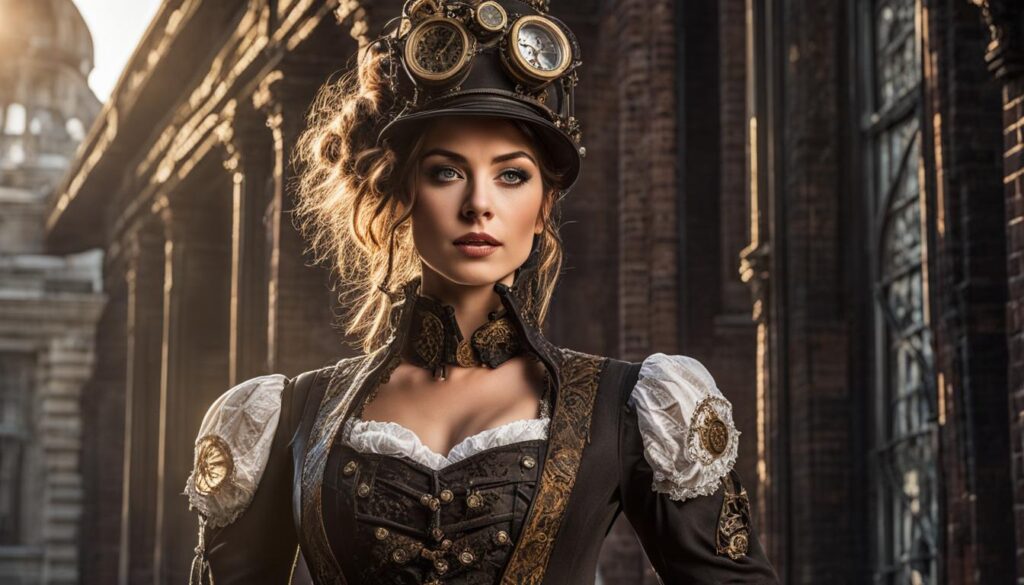
The incorporation of steampunk elements into mainstream fashion has helped the movement gain even more visibility and appeal to a wider audience. By infusing a touch of whimsy and nostalgia into modern clothing, steampunk fashion has become a way for individuals to express their creativity and embrace a unique sense of style that blurs the boundaries of time.
The Intersection of Fashion and Fantasy
Steampunk fashion’s influence extends beyond the wardrobe. It serves as a bridge between the real and the fantastical, inviting people to explore alternate histories and reimagine the possibilities of the Victorian era. By embracing steampunk fashion, individuals can step into a world where steam-powered contraptions coexist with corsets and top hats, where the collision of past, present, and future creates a visual tapestry that sparks curiosity and captivates the imagination.
| Benefits of Steampunk Fashion | Drawbacks of Steampunk Fashion |
|---|---|
| Allows for self-expression and creativity | Can be costly to assemble a full steampunk outfit |
| Provides a unique sense of style | May require time and effort to find the right pieces |
| Invites individuals to explore historical aesthetics in a new way | May not be widely accepted or understood by mainstream fashion |
Steampunk fashion is not just about clothing; it’s a statement. It’s a way for individuals to embrace their inner adventurers and inventors, paying homage to an era when imagination and innovation collided. It’s about reimagining the past and reshaping the future, all while looking dapper and fabulous.
In conclusion, steampunk fashion’s influence has been instrumental in the growth of the genre. It has allowed individuals to step into a world where fashion meets fantasy, where Victorian elegance intertwines with futuristic innovation. Whether through full costumes or subtle accessories, steampunk fashion invites us to embrace our creativity, challenge societal norms, and celebrate the beauty of blending the old with the new.
The Birth of the Steampunk Genre in Movies
Steampunk’s influence expanded beyond literature and found its way into the world of cinema. While originally a literary sub-genre, steampunk quickly gained recognition in movies, thanks to films like “The Difference Engine” by William Gibson and Bruce Sterling and Paul Di Fillipo’s “Steampunk Trilogy.” These movies played a significant role in solidifying steampunk’s identity and paving the way for its cinematic dissemination.
In the 1990s, as steampunk gained traction in the literary world, it became a recognizable sub-genre with a unique visual style. This evolution allowed steampunk to transcend literature and venture into the realm of movies. By the early 2000s, steampunk cinema experienced a surge, with over thirty big-budget theatrical releases embracing the steampunk aesthetic.
The emergence of steampunk in movies sparked fascinating discussions about its generic identity and its connection to reimagining Victorian industry. Scholars and enthusiasts engaged in debates centering around how steampunk challenged conventions and pushed the boundaries of creativity. The cinematic portrayal of steampunk brought to life the fusion of history, fantasy, and innovation, captivating audiences and solidifying its place in popular culture.
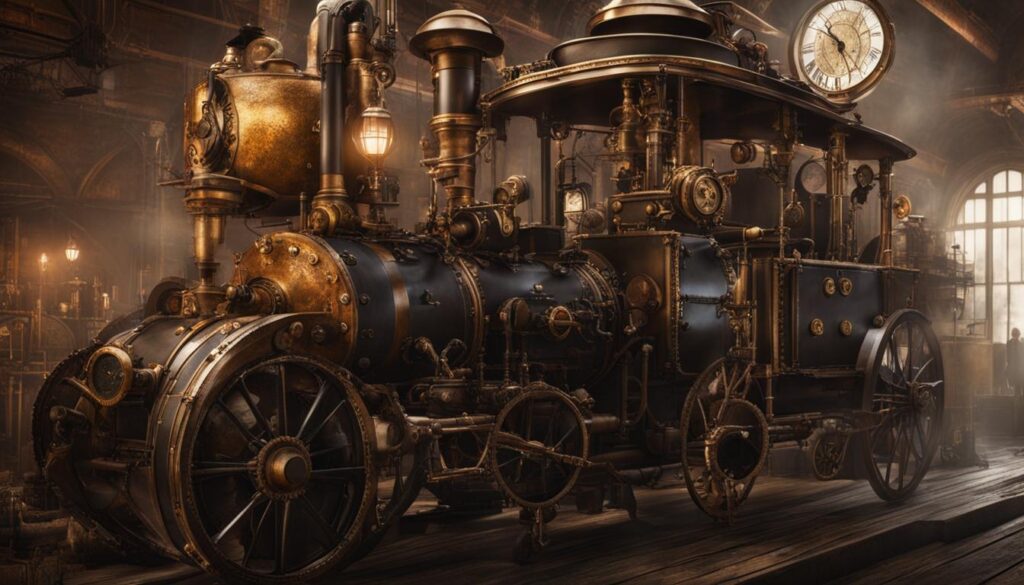
Steampunk’s Cinematic Influence
The influence of steampunk in movies extended beyond its aesthetic appeal. It prompted a reimagining of Victorian industry, showcasing innovative steam-powered technologies and fantastical inventions. This blend of historical inspiration and imaginative futurism captivated viewers, provoking a sense of wonder and curiosity.
Furthermore, steampunk’s cinematic adaptations provided a visual feast for audiences. Elaborate costumes, intricate set designs, and dazzling special effects brought the steampunk world to life, creating an immersive experience. This attention to detail and commitment to visual storytelling further cemented steampunk’s place in cinematic history.
Steampunk’s Enduring Legacy
The birth of the steampunk genre in movies marked a significant milestone in its cultural expansion. It opened doors for further exploration of the steampunk aesthetic and themes, inspiring filmmakers and creators to push the boundaries of storytelling and visual design. Steampunk’s influence continues to resonate in contemporary cinema, as filmmakers strive to capture its unique blend of retro-futurism and Victorian charm.
Steampunk cinema remains a testament to the enduring allure of the genre, showcasing its ability to captivate and transport audiences to an alternate world filled with adventure, innovation, and imagination.
Steampunk’s Cultural Expansion and its Global Significance
Steampunk’s rise in popularity has not been confined to the realms of literature and movies. Its unique aesthetic and ethos have found expression in various forms of media, leading to its cultural diffusion and global significance. From technology modification to art, fashion to interior design, and music to video games, steampunk has permeated multiple creative outlets, captivating enthusiasts and inspiring a sense of belonging among its global community.
The diversifying representations of steampunk in different mediums have played a crucial role in its cultural expansion. The blending of Victorian and futuristic elements has created an aesthetic that is visually appealing and evocative. Steampunk fashion, for example, has influenced mainstream clothing styles and accessories, with elements like corsets, antique watches, and Victorian-inspired jewelry finding their way into everyday wear.
Steampunk’s ability to transport individuals into an alternate world, one that combines nostalgia and innovation, has fueled its growth and helped it forge an international following.
Steampunk’s global reach is a testament to its universal appeal. By transcending geographical boundaries, this genre has brought together individuals from different cultures, united by a shared love for its aesthetics and the values it represents. Steampunk’s influence is not limited to entertainment; it also extends to promoting sustainability through its emphasis on recycling and appreciation for enduring craftsmanship.
The cultural diffusion, diversifying representations, aesthetic influence, and global reach of steampunk underline its profound impact on popular culture. It continues to capture the imagination of people worldwide, forging connections, and fostering creativity. As steampunk envisions a world where the past and the future intertwine, its significance in shaping contemporary society remains as relevant as ever.
Conclusion
Steampunk’s remarkable journey from a niche curiosity to a mainstream phenomenon is a testament to its enduring appeal and cultural impact. This unique genre, born from the blending of Victorian aesthetics and innovative technology, has captivated the imaginations of people around the world.
From its humble beginnings in the literary world, steampunk has expanded its influence across various forms of media, including fashion, cinema, art, music, and even technology modification. Its ability to combine history, fantasy, and creativity in a visually captivating way has left an indelible mark on popular culture.
As society evolves, steampunk continues to adapt and inspire. Its growth story is a fascinating narrative that highlights the power of imagination and the timeless appeal of blending the old with the new. The impact of steampunk on popular culture is undeniable, and its allure will likely continue to captivate new audiences and inspire future generations to push the boundaries of creativity.
FAQ
How did steampunk gain popularity?
Steampunk gained popularity due to its ability to allow individuals to express their creativity, its appeal to those seeking a more peaceful and simpler world compared to modern-day innovation, its resistance to definitive categorization, its visually appealing nature, and its ability to unite fans and enthusiasts from around the world.
What is steampunk fashion?
Steampunk fashion draws heavily on Victorian styles, with women wearing floor-length skirts, blouses, and corsets, while men opt for top hats, frock coats, and waistcoats. Steampunk enthusiasts often customize their outfits with salvaged cogs, timepieces, and buckles.
How has steampunk influenced cinema?
Steampunk’s influence in cinema began with its consolidation as a recognizable sub-genre in literature. This led to over thirty big-budget theatrical releases embracing the steampunk aesthetic, sparking debates about its generic identity and its connection to the reimagining of Victorian industry.
Where else has steampunk made an impact?
Steampunk has expanded into various forms of media, including technology modification, art, music, video games, role-playing games, and interior design, to name a few. Its unique aesthetic has helped establish a distinct and recognizable identity for steampunk.
What is the significance of steampunk’s growth?
Steampunk’s growth from a subculture to a mainstream phenomenon is a testament to its enduring appeal and cultural relevance. It has left an indelible mark on popular culture and continues to captivate new audiences while inspiring future generations to explore the boundaries of creativity.

